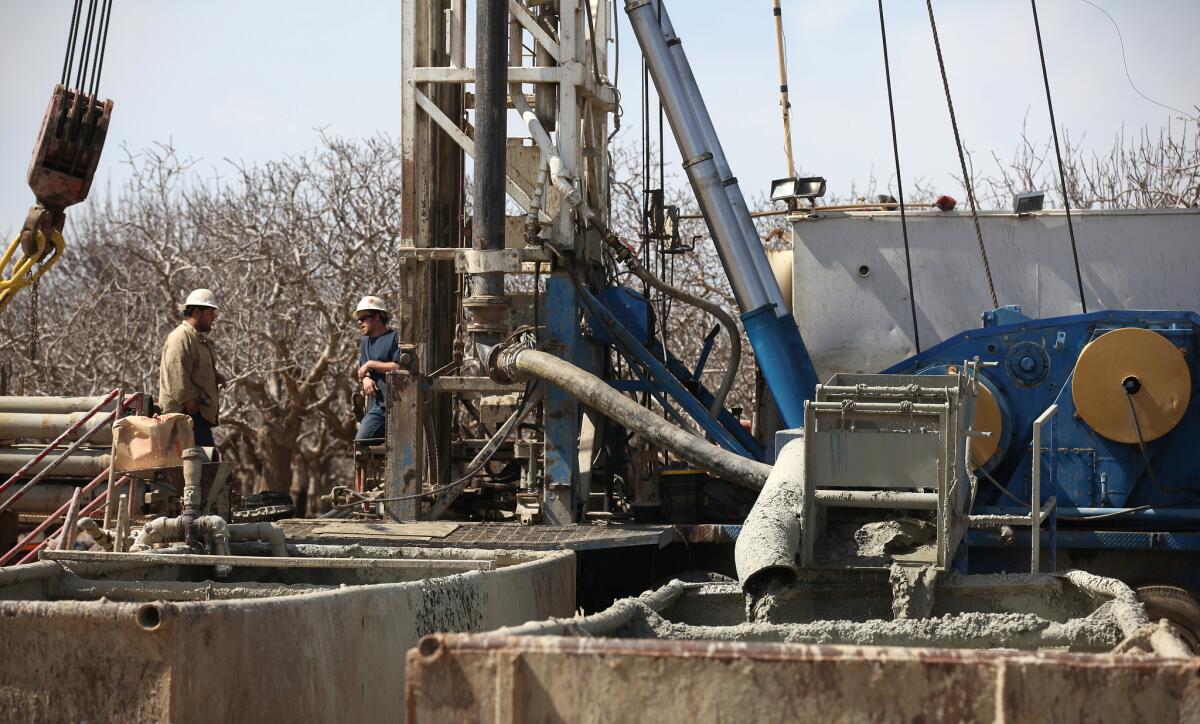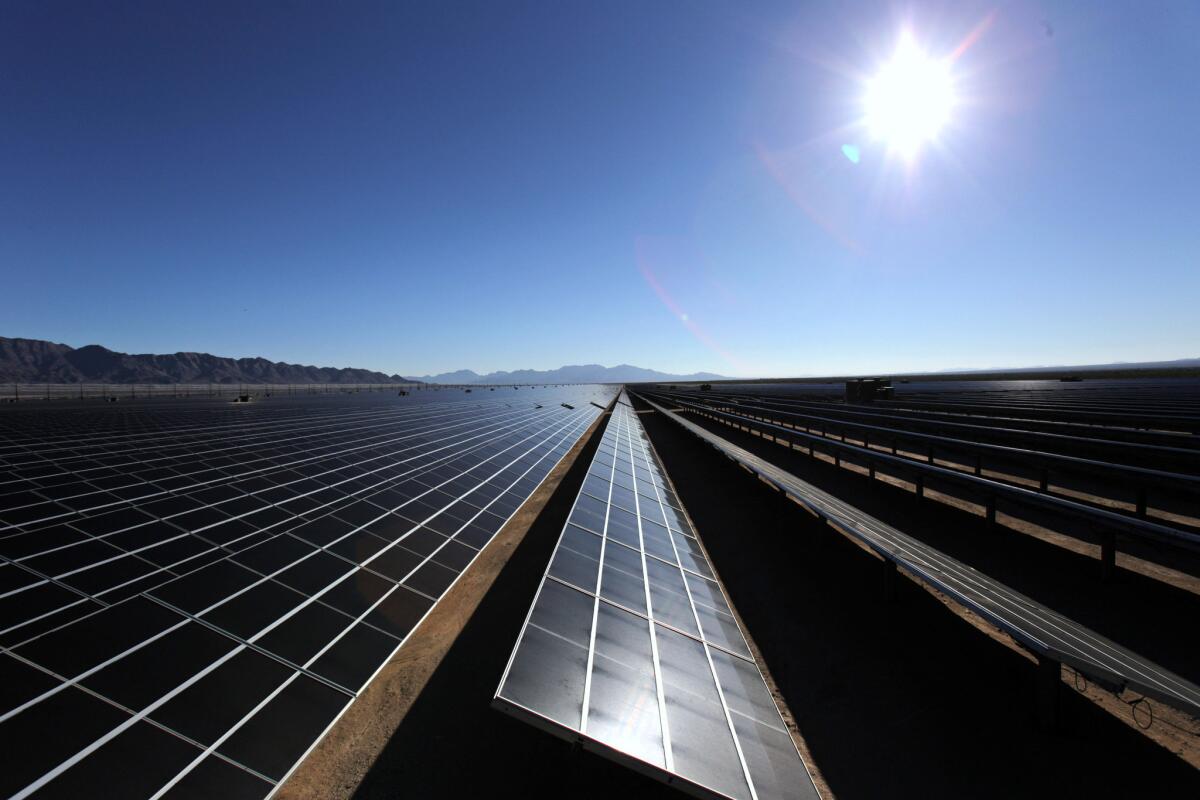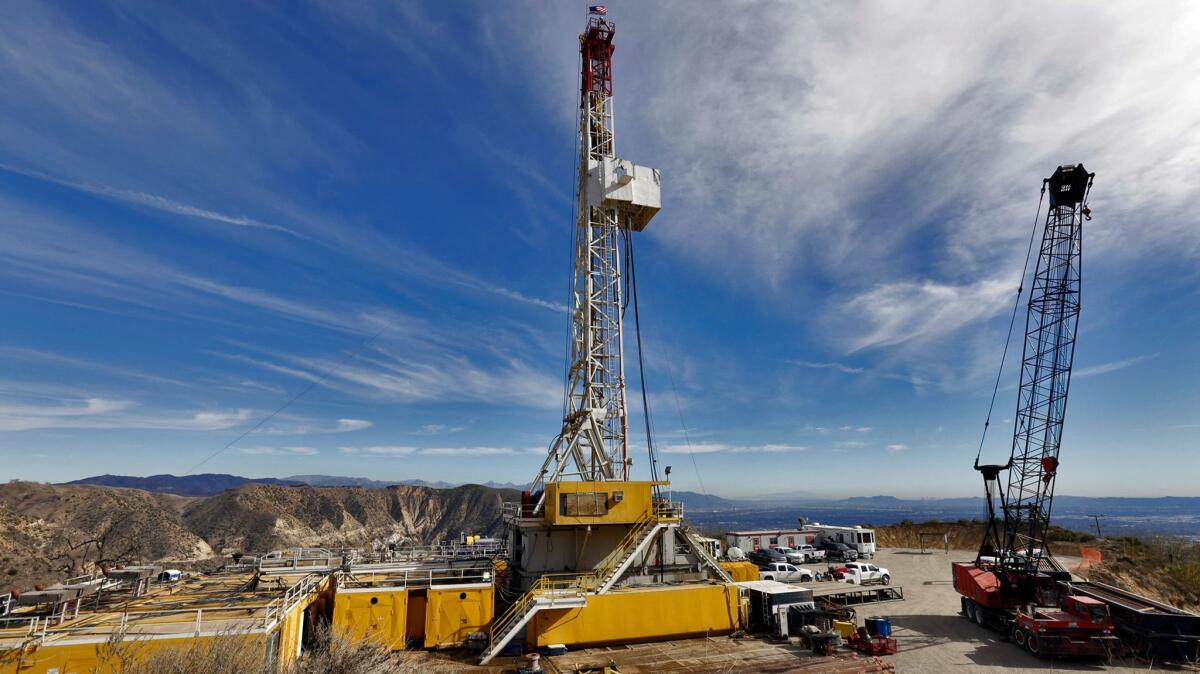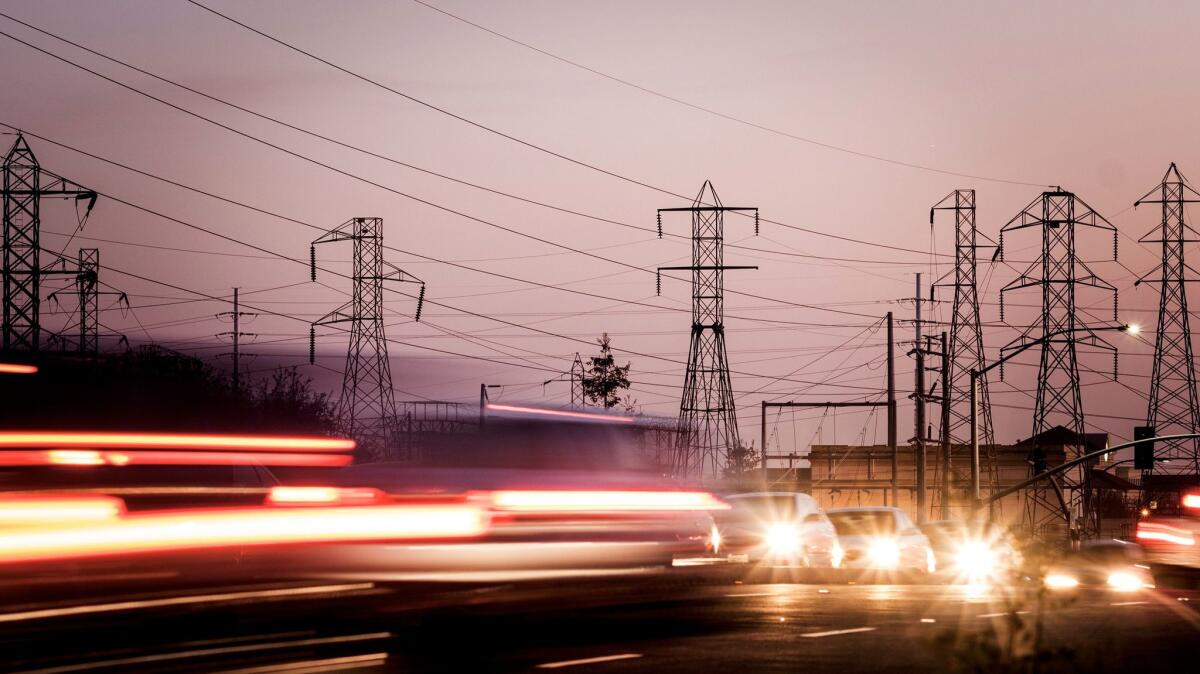Natural gas is energy’s new king — but how long will it reign? California may offer some clues
King Coal has been kicked off the throne.
Natural gas is now the nation’s leading source of electricity. It is abundant and cheap, which has not only crippled the coal industry but has also affected virtually every other source of power that makes up the energy grid.
Some have estimated there is enough natural gas in the U.S. to meet the country’s energy needs for about 200 years.
But “King Gas” has its critics — especially among environmentalists — and California’s fast-changing energy landscape offers hints that a long, smooth reign for natural gas is far from assured.

The natural gas revolution
As late as 1986, natural gas was used to generate just 10% of the country’s power. By 2016, that figure leaped to 34%, supplanting coal as the No. 1 source of electricity. The U.S. Energy Information Administration recently projected the nation’s use of electricity from gas will exceed coal by 6% by next year.
What changed?
Producers have been able to unlock vast amounts of natural gas through the combination of hydraulic fracturing, also known as fracking, and horizontal drilling techniques in shale formations such as the Barnett in Texas and the Marcellus Shale in Pennsylvania and parts of Ohio and West Virginia.
Just a few years ago, the U.S. had to import natural gas from other countries to meet its needs. Today, there is so much that U.S. producers export natural gas to places like Mexico.
Burgeoning supplies caused the price of natural gas to drop. At some periods between 2003 and 2008, the price approached $14 per million British thermal units, a common industry measurement. Since the fracking boom, prices averaged less than $3.20 per million BTU.
Those low prices are one reason that natural gas is attractive to utilities as a way to generate electricity. Natural gas-fired plants also have the ability to “ramp up” power very quickly.
In addition, natural gas burns twice as cleanly as coal.
“The biggest, most disruptive innovation in the energy sector in the last 30 years is unconventional natural gas” from shale formations, said Frank Wolak, professor of economics and an energy expert at Stanford University. “There is no doubt that if that innovation had not occurred, we would be burning even more coal.”
A ripple effect on other energy sources
Even major oil companies are focusing more on natural gas. For example, of the 16 new projects BP plans to complete by 2021, 12 of them involve natural gas instead of oil.
Diesel is also feeling the impact. Increasingly, city governments are switching their fleets of metropolitan vehicles, such as buses, from diesel to natural gas.
Low natural gas prices have delivered a body blow to nuclear power, eating into revenue. An analysis by Bloomberg New Energy Finance found more than half of U.S. reactors are losing money.
California’s last nuclear reactor in operation, Diablo Canyon, is slated to begin closing its doors in 2024.
It appears nuclear’s losses equal gains for natural gas.
When the San Onofre Nuclear Generating Station closed permanently after a January 2012 leak, natural gas as a percentage of California’s in-state generation ballooned from 45.4% in 2011 to 61.1% in 2012, according to figures from the California Energy Commission.

Renewables ramp up
Falling prices for renewable energy sources, such as solar and wind, plus aggressive mandates from state policymakers have propelled California to the forefront of integrating renewables into the state’s power mix.
In the energy commission’s most recent figures, the share of in-state generation from renewables reached 27.9% in 2016 — nearly twice as much as in 2009.
At the same time, growth in wind and solar is often linked to growth in natural gas.
That’s because wind and solar have problems with intermittency: Solar production slips when the sun doesn’t shine and electricity generated by wind wanes when breezes don’t blow. Supplies of natural gas smooth out the gaps.
Mark Zoback, director of the Natural Gas Initiative at Stanford University, said the relationship between renewables and natural gas is not an either/or proposition.
“If the sun is really shining, which is mostly in the afternoon, or the wind is really blowing, which is mostly at night, you can cycle the natural gas plants to compensate for what the renewables are or are not doing,” he said
Zoback said the long-term future of energy will belong to renewable sources, but they’re not there yet and abundant supplies of natural gas will help foster the transition.
The opposition
Environmental groups are uniformly opposed to natural gas.
Although cleaner than coal, natural gas is nonetheless a fossil fuel that emits greenhouse gases. Natural gas is mostly made up of methane, and there are concerns about leaks because methane, if released into the atmosphere, is about 30 times more potent than CO2.
“When you take into account the environmental impacts and the dangers of climate change associated with natural gas, it might be natural but it’s not good for the environment,” said Dan Jacobson, state director at Environment California.
In California, there’s a growing school of thought that there is too much natural gas in the system.
A Los Angeles Times investigation last year reported a growing glut of power in the state. California power plants, based on estimates, were on track to produce at least 21% more electricity than needed by 2020.
“We’ve been building up our gas-fire infrastructure at a rate that we could turn off every solar panel and every wind turbine right now and we wouldn’t skip a beat,” said Bill Powers, an engineer and consumer advocate based in San Diego.
Powers believes the $2.2-billion, 558-megawatt Carlsbad Energy Center, scheduled to be completed by the end of this year, is not needed. San Diego Gas & Electric officials have called it “the new workhorse for the region” and say it will help California meet its target of 33% clean-energy generation by 2020 and 50% by 2030.

Others point to the fact the Aliso Canyon natural gas storage facility was offline for 17 months but Southern Californians did not experience serious power outages as evidence the facility is not crucial to grid reliability.
Aliso Canyon is the site of the largest methane leak from a natural gas storage facility in U.S. history. It forced the evacuation of more than 8,000 households in the Porter Ranch neighborhood of Los Angeles County.
Gary Ackerman, executive director of the Western Power Trading Forum, an organization based in Sacramento whose 90 members in the West buy and sell power, said concerns about an oversupply of natural gas can be misleading.
“One could point the finger at any supply source, such as solar, ... hydro, or even imported power from the Pacific Northwest into California,” Ackerman said. “When it comes to building too much, then everything is too much, not just out-of-the-money gas-fired power plants.”
The development of energy storage systems powered by batteries may also pose a challenge to natural gas.
Right now, gas “peaker” plants are fired up to meet energy demands, such as when large numbers of utility customers turn on their air conditioners during heat waves.
But supporters of battery storage see a day when peaker plants will be replaced — by storing up energy when, say, wind and solar are producing at their maximum amounts and then deploying that energy when wind and solar production ebbs.
Storage systems are considered more expensive than natural gas but costs are falling, and in an effort to expand the market, state policymakers in 2013 ordered the state’s three investor-owned utilities to buy a required amount of storage by 2020.
“California is a harbinger because we have the most aggressive targets for green power, but the real story in the background is the price for solar continues to drop to levels that people just couldn’t believe we would reach at this point in time,” Powers said. “Battery storage is following the same trend.”

The future
Powers said natural gas dominance is no sure thing, pointing to falling prices for alternative energy sources.
“If in a few years you can produce power at $25 a megawatt-hour from a solar field or buy it at a gas plant at $35, just on cost alone a lot of solar is going to be built, even in states where there’s no green mandate and no pressure to go green,” Powers said.
Zoback isn’t so sure natural gas will lose its grip that quickly.
“My sense is that we’re going to see expanded use of natural gas for the next 20 years,” Zoback said. “In the following 20, it will have a useful decline and 40 to 50 years from now I think we will be using very little natural gas. We’ll largely have renewable sources.”
rob.nikolewski@sduniontribune.com
More to Read
Inside the business of entertainment
The Wide Shot brings you news, analysis and insights on everything from streaming wars to production — and what it all means for the future.
You may occasionally receive promotional content from the Los Angeles Times.











